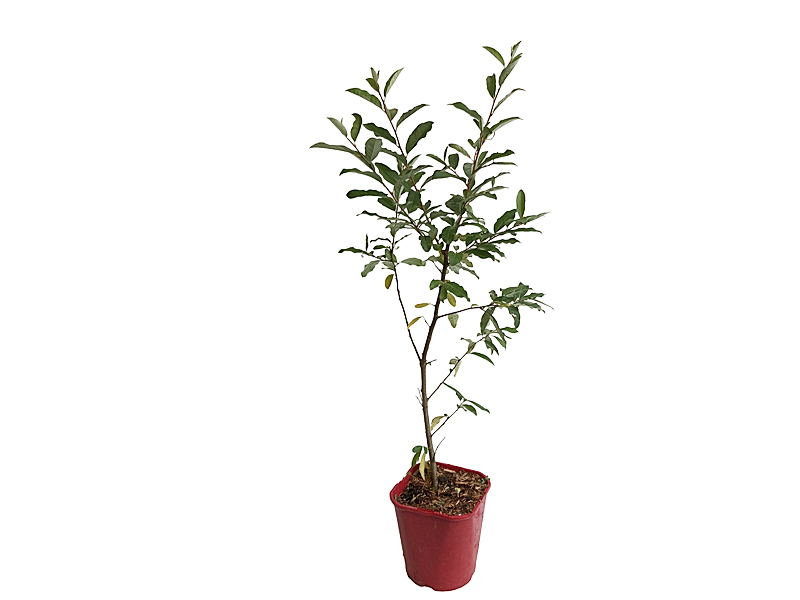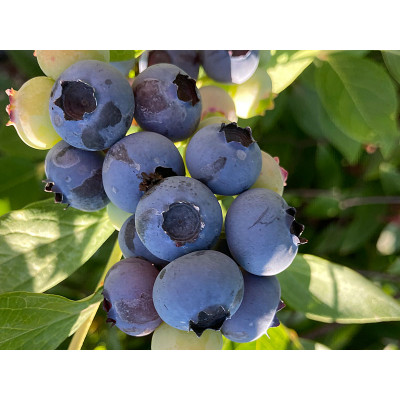Hlošina okoličatá (elaeagnus umbellata) POINTILLA SWEET'N'SOUR®




- štandardná doba dodania je 1-2 pracovné dni
- balíky posielame vždy v pondelok, v utorok a v stredu
- po dohode vieme rastliny poslať aj v štvrtok alebo v piatok (tieto dni štandardne neposielame z dôvodu, ak by sa vyskytol nejaký problém, aby balíky nestáli zbytočne v depe cez víkend)
Položte otázku k tomuto produktu
| Špecifikácie | |
| Výška pri predaji | 70cm |
| Kontajner | C2 |
| Predávame ako | 2 ročný |
| Doba dozrievania | September/ Október |
Tovar posielame v Pondelok, Utorok, Stredu (po dohode aj vo Štvrtok, alebo v Piatok)
- Dostupnosť: Na sklade
- Model: Elaeagnus umbellata
Elaeagnus umbellata POINTILLA® SWEET'N'SOUR® je zástupcom ovocného kríka, ktorý má svoje vlastnosti podobné na iné druhy. Jej vlastnosti sú veľmi podobné na odrodu ´Pointilla Amoroso´. Kvitne koncom apríla až začiatkom mája a rodí bohatú nádielku jasne červených plodov s jemnými bodkami, ktoré nemusia byť jasne viditeľné. Tie dozrievajú koncom leta. Tak ako názov napovedá, jej chuť je výrazne sladkokyslá. Tvar plodov je pravidelný, pripomínajúci olivy, alebo drieň. Dozrievajú koncom septembra, alebo začiatkom októbra.
Hlošina patrí u nás ešte stále medzi netradičné ovocie. Ovocie rastie na rýchlorastúcom hustom ovocnom kríku, ktorý môže vzdialene pripomínať čerešňu. Nemožno sa potom čudovať, že na britských ostrovoch a v USA, kde je toto ovocie obľúbené v koláčoch a džemoch mu hovoria jednoducho cherry (čerešňa). Plody sú známe svojim obsahom vitamínu C a vysokým obsahom antioxidantov. Elaeagnus umbellata si vyžaduje ďalšiu rastlinu ako opeľovača. Rastlinu svojho druhu, alebo príbuzného. Po pár rokov je vhodné z vnútra rastliny odstrániť staré drevnaté a nerodiace výhony a ponechať bez zásahu mladé a rodiace. Pomôže to zvýšiť produkciu, ako aj priestor pre rast rastliny. Staršie trojročné výhony môžeme odstraňovať aj v rámci udržiavacieho rezu počas skorej jari.
Hlošiny zvládajú suchá a nepravidelnú zálievku. Dôležitou vlastnosťou je nenáročnosť na pôdu, takže je ich možné pestovať aj v pôdach s obsahom ílu. Samozrejme, úrodná humózna pôda bude vždy prínosom a výhodou. Vhodnou je slnečná poloha, prípadne polotieň. Nie však prevaha tieňa, čo môže rastline uškodiť. Ďalšou výhodou hlošín je pomerne dobrá odolnosť voči škodcom a chorobám, ale taktiež voči mrazom. Pre pestovateľa predstavuje nenáročného zástupcu ovocia, ktorý sa v posledných rokoch spomína aj ako alternatíva pre živý plot. Hlošina kvitne bielymi drobnými predĺženými kvetmi počas mája a plody rodí počas júla. Všetky odrody, ktoré nesú označenie Pointilla® sú považované za odolné a vhodné aj do mestskej zástavby a na pestovanie v bytových terasách aj na balkónoch (v nádobách).

















































































